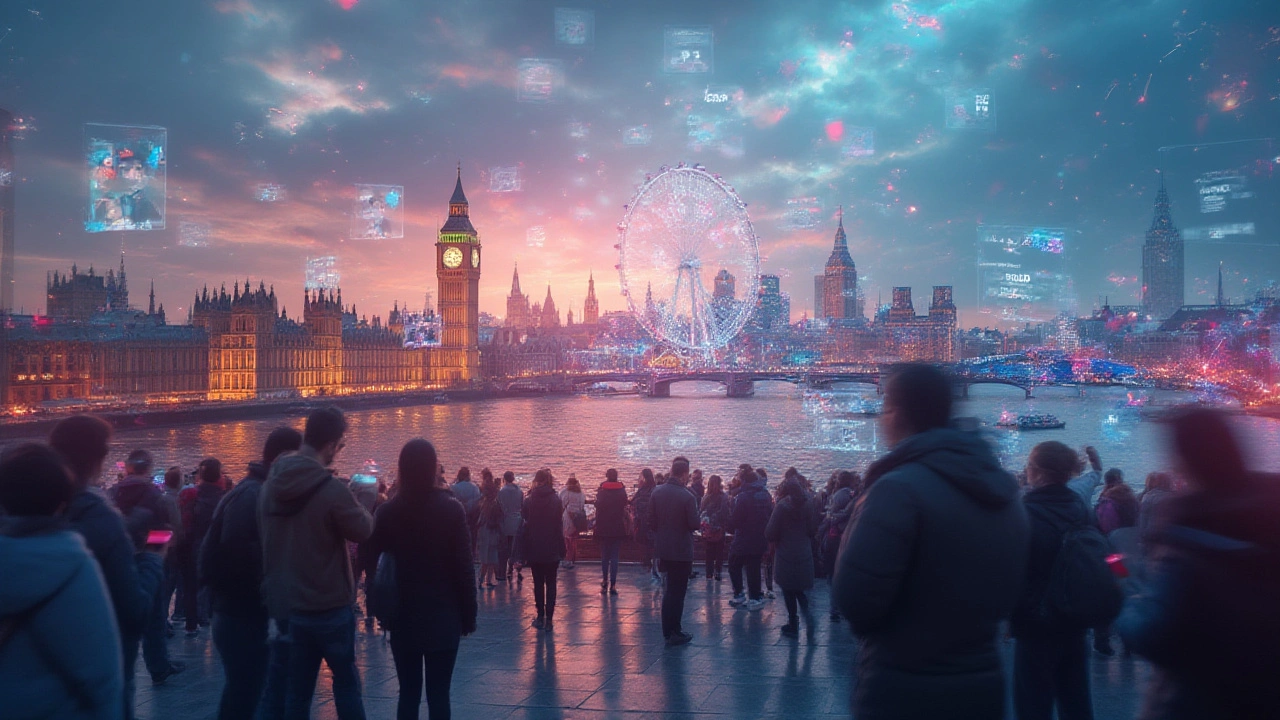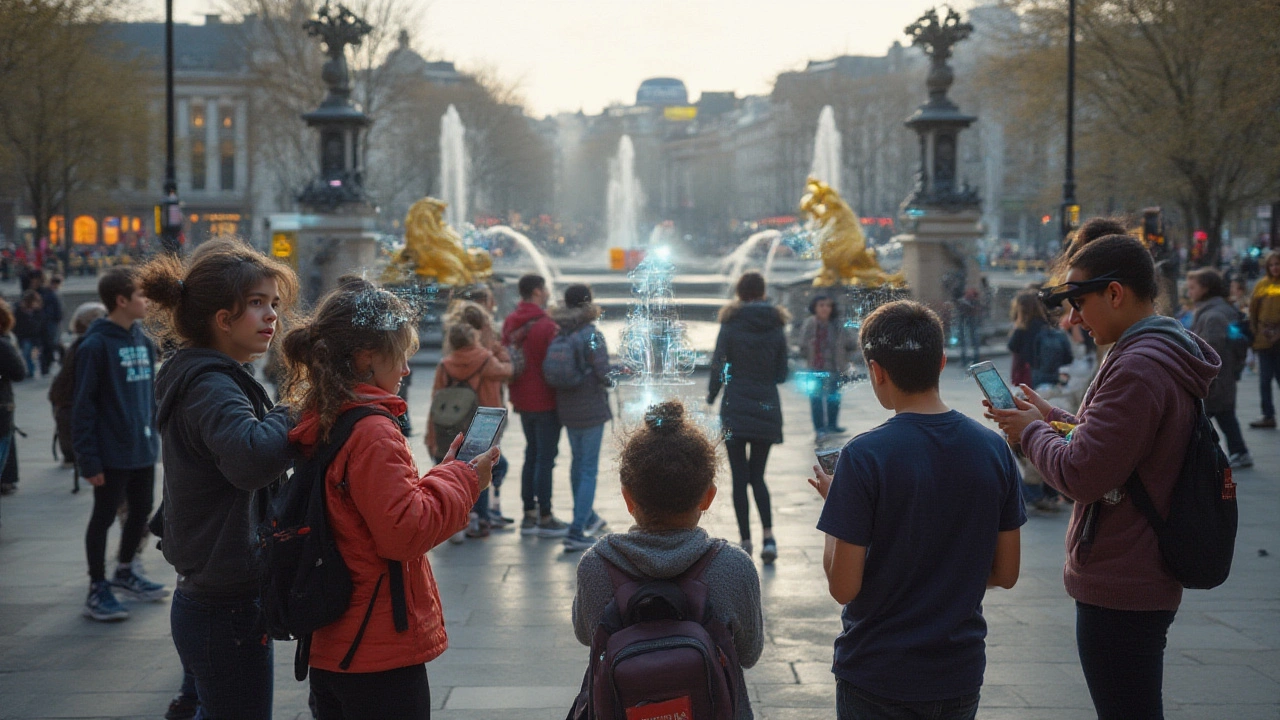
Whether you’re dodging pigeons at Trafalgar Square or snapping Big Ben selfies from Westminster Bridge, there’s no denying that London landmarks have always attracted a mix of wide-eyed locals and just-landed tourists. But something’s shifted lately. Those crowds clutching paper maps have thinned. Instead, you’ll spot families huddled with iPads, solo tourists grinning at their phones, and even lifelong Londoners discovering fresh facts about Hyde Park thanks to a clever bit of kit. Technology isn’t just changing the way we find our way through the city—it’s flipping the whole sightseeing experience on its head.
Ever wanted to see the Globe Theatre rise up from the embers of Shakespeare’s day right there on the South Bank? You can now, and you don’t need a time machine. Augmented reality (AR) apps like Streetmuseum from the Museum of London have turned London’s pavements into portals, layering historical photos and reconstructions directly onto your smartphone camera’s view of the street. Simply hold up your phone in Covent Garden, and suddenly you’re staring into the Victorian bustle of market traders instead of the hordes of Covent Garden street performers.
This immersive tech isn’t just a neat party trick. For history lovers and curious kids, it’s a way to transform what might be ‘just another old building’ into a living, breathing chunk of the past. The Tower of London takes full advantage of this, with AR experiences letting you walk beside digital sentries or watch executions play out where they once happened (without the gore). AR trails are popular now at Kensington Palace, the British Museum, and the Science Museum—offering bite-size facts, 3D objects to ‘grab’ on screen, and playful scavenger hunts.
If you want to get in on the action, download an app like Smartify before your visit—many top sites partner with them, letting you scan an artwork or artefact and get not just dry data but punchy stories and even video guides. Don’t worry if you’re not techy: most places lend devices on the spot, and the staff are dead helpful if you get stuck.

Gone are the days when you’d buy a London A-Z or spend hours on trip forums. Your phone is the guidebook now. TfL’s own Journey Planner means you’ll never have to squint at a tube map under Waterloo station’s fluorescent lights again. Citymapper is a must-have—even for Londoners who know their Piccadilly from their Bakerloo. It’ll tell you the fastest route from the Tate Modern to the Natural History Museum, how late the buses are running, and even which carriage you should board for the quickest exit.
But tech isn’t just about getting around. The Visit London app curates everything from exhibitions at the National Gallery to food pop-ups in Shoreditch, listing times, reviews, and sometimes live queue data. When big events like the Lord Mayor’s Show or Wimbledon are in town, apps alert you to route closures, detours, and viewing spots in real time. Big spenders may even want to check out Tumelo or Bloomberg Connects for finding unique themed walking tours with expert commentary. Loads of places now offer virtual tours—so if you can’t stand the crowds at the British Library, just swipe through the Magna Carta from your own sofa.
Speaking of sharing, we can’t ignore London’s thriving online communities. On Instagram, you’ll find @london and @secret.london sharing the best quirky corners. Hop on TikTok before hitting Borough Market and you’ll spot food stalls the locals actually rave about, not just the tourist traps. If you’re interested in stats, check out the table below for some eye-openers on how Londoners use apps for tourism:
| App/Technology | Local Usage (%) | Most Popular Locations |
|---|---|---|
| Citymapper | 85 | Soho, Camden, Westminster |
| AR history apps | 60 | Tower of London, British Museum |
| Virtual tours (museums) | 40 | Science Museum, V&A, National Gallery |
| Social media tags | 75 | Borough Market, Southbank, Sky Garden |
Give yourself permission to become a tourist in your own city. Download a couple of apps, try a virtual tour, or follow a local hashtag—you might just see London in a whole new light.

London attractions have always been quick to try new things—think of the world’s first underground railway, or the National Theatre’s £10 tickets sold by algorithm. Lately, smart tech is making visits smoother and safer too. Since 2020, booking tickets online is pretty much the rule. Find yourself at the London Eye? Forget lining up—scan a QR code on your phone for your turn. At the Shard, you check in with digital passes, while extra perks like mobile audio guides add commentary in any language you fancy.
Queue-jumping is serious business in London, and services like Tiqets and GetYourGuide let you buy priority tickets for nearly every major site (plus handy bundle deals for multiple landmarks—think Madame Tussauds, London Dungeon, and SEA LIFE). West End theatres have also caught on—Nimax and Delfont Mackintosh have their own apps now so you can buy seats, snacks, and even merchandise from your seat at the Dominion or Palace Theatre. The Natural History Museum and British Museum now both use real-time crowd monitoring systems. What this means in practice: you’ll get instant push notifications if one part of the museum is jammed and recommendations to check out a quieter (but often more interesting) section. With daily attendance numbers back up near pre-Covid highs, these little touches make all the difference.
Contactless is king. Whether it’s Transport for London’s Oyster cards or Apple Pay at food stalls in Borough Market, you rarely need cash. Even the ancient Tower Bridge is on board—its ticket gates accept all the major payment methods. And accessibility’s improving fast: many landmarks now offer audio-described, British Sign Language, and ‘easy-read’ guides for people with disabilities, often integrated right into their apps.
The future’s coming on fast. Already, London’s planning 5G-powered AR overlays for the Elizabeth Line and public WiFi is spreading. Borough Councils are teaming up with developers to build more smart benches (charging your mobile with just a sit-down), and the West End’s historic alleyways may soon have digital guides triggered by motion sensors. It’s a world away from scribbled street maps—and for anyone keen to get the most from London, embracing the tech means you’ll see, hear, and taste far more than you ever could before.